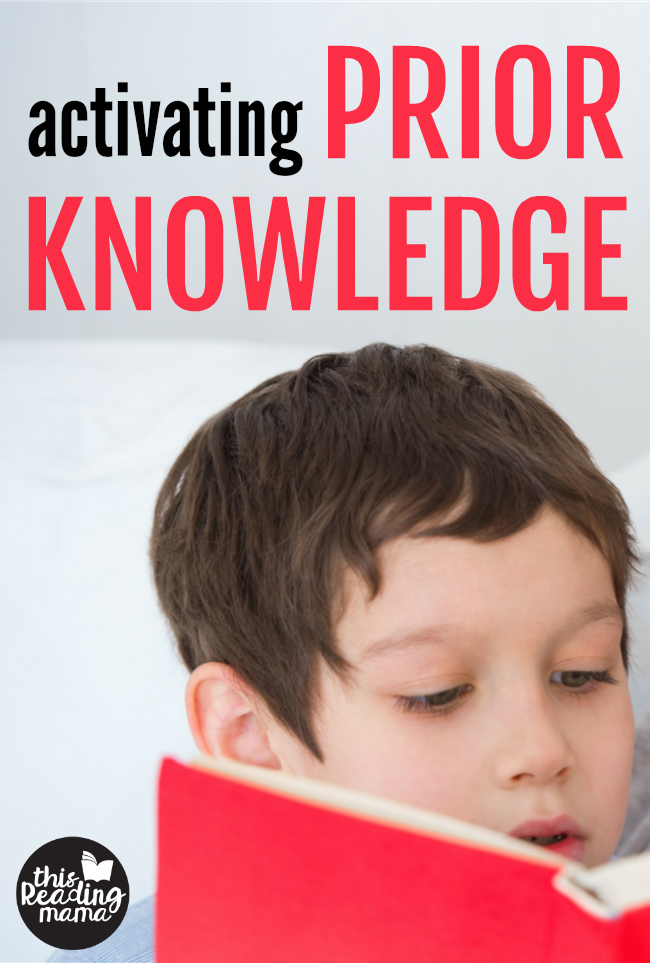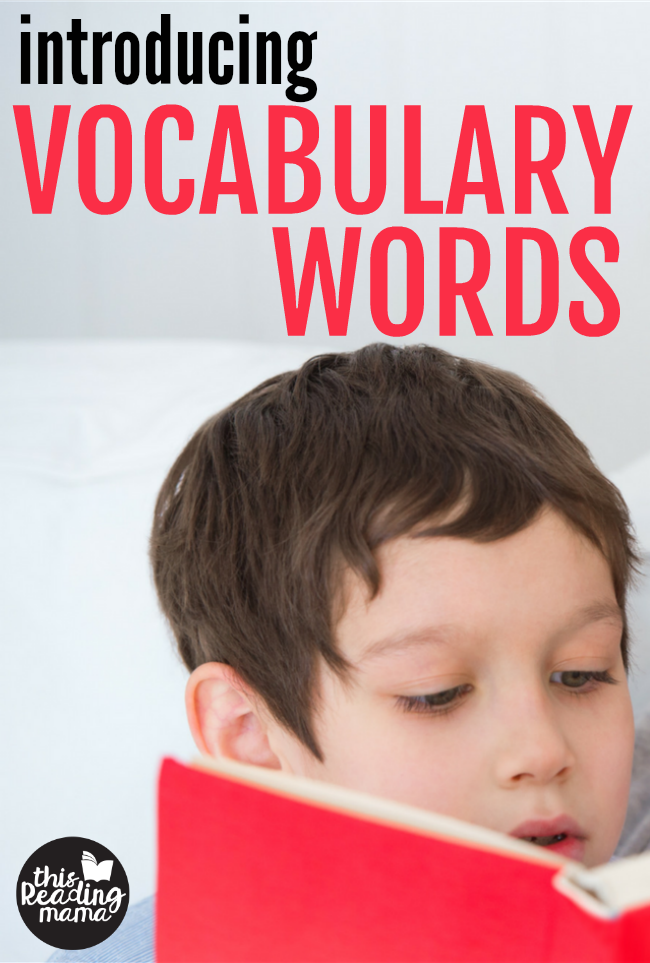Activating prior knowledge before, during, and after reading is a key component to keeping our readers engage with what they are reading. Without interacting with their prior knowledge, readers become passive, negatively affecting their comprehension and fluency.
Today, I want to focus in on connecting new content to a reader’s prior knowledge. The term prior knowledge basically means what the reader knows; his schema.
Prior knowledge is built by experiences such as field trips, prior studies, their interests, other books they’ve read, or just plain and simple life {family, planting a garden, the grocery store, raising chickens, etc.}.
Why is Activating Prior Knowledge Important?
1. You build on what you know to learn about what you don’t know. When something new is learned, the brain needs an anchor. Something to attach the new item to. Something that is known that helps place the new information in its correct “spot”.
For example, if my son is very good at adding, but struggling with subtracting; I take what he knows {addition} and relate it to subtraction so his brain can make the connection. Sometimes those connections are made naturally by readers. Sometimes, especially for struggling readers, those connections are not.
2. It helps you know if the book is appropriate or not. If a reader has very little or no prior knowledge about a certain subject, this is a big hint that the text may not be appropriate for that child. For example, if the reader has never gone water skiing, a book about water skiing will be harder to comprehend than a child who has been water skiing multiple times.
3. Comprehension is built on prior knowledge. This is directly related to the last point about prior knowledge. Readers have a very hard time making connections, predicting, making mental images, inferring, etc. when they do not possess the prior knowledge. In other words, comprehension strategies that good readers use rely heavily on prior knowledge.
For example, proficient readers make predictions based on their prior knowledge or what they would do in that particular situation. I can predict that the snowman will probably melt when the sun comes out based on my prior knowledge.

4. Prior knowledge has a 2nd cousin: vocabulary. When a reader comes to a text with lots of prior knowledge about the subject, it is typically easier for the child to comprehend because much of the vocabulary is familiar. If your learner is really into horses, much of the specific vocabulary related to horses will already be in her head because of her prior knowledge. When she comes to a word like muzzle, she will read and comprehend it like its second nature.
On the flip side, when a child does not have a lot of prior knowledge about a particular subject, new vocabulary words are not only hard to decode, but hard to comprehend. This tends to happen more in non-fiction texts, when the vocabulary is unique to that particular subject.
Prior Knowledge in Action
1. Model it. Readers, especially struggling readers, need to see you model how you connect your prior knowledge to the text you’re reading.
When you infer that the main character is upset in the book, connect it specifically: “When I lost my favorite necklace, I was very upset. So when the character lost his bike, I can totally relate.” If you are introducing a new word, such as stump, connect that word to real life. Say something like, “Remember when that dead tree fell in our yard? What’s left of it is called a stump.” So much of prior knowledge and comprehension is silent. Readers NEED to hear our thoughts and strategies.
2. Ask Questions. Before reading a text, ask about prior knowledge.
Brainstorm the things she already knows about the subject from her experiences. Use that information to help make the connection between what the reader knows and what she does not know, yet. Or instead of just accepting the answer to “What do you think will happen next?”, dig deeper by asking: “Why do you think that will happen next?” This encourages the reader to make that connection between what they know and what they are reading.
3. Build it. Take field trips. Read texts about all kinds of subjects appropriate to your child’s development. Get outside. Do science experiments. Get on YouTube {monitored, of course}.
One simple way you can build on prior knowledge with a younger child is to take a picture walk through the text first, making predictions together based on the cover and other pictures in the text. Along the way, point out some of the vocabulary on the page.
For example, if the text says shore instead of beach, point that out by saying something like, “You just used the word beach, but in this book, the author chose the word shore. Can you find the word shore on this page?” It doesn’t have to be expensive or take the creativity of Martha Stewart. Anything you can do to make the subject tangible, concrete and hands-on; do it!
What other ways do you help readers with activating their prior knowledge so they can become more active readers?
Find Part 2 of this post: Introducing Vocabulary Words
Enjoy teaching!
~Becky


Fabulous post, Becky! But how on earth do you keep your books organized? All my books were organized by Fountas and Pinnell’s system too, but as soon as my daughter started taking the books off the shelves herself it was impossible to keep them organized. I need to know your system 🙂
I have them labeled by level with address stickers. Most of the books are in boxes in the attic. As he gets to each level, I pull it out and we start working through it. As he outgrows books, I start putting them back. I wish I had my large bookshelf like I did when I tutored. I left them all out in labeled tubs. But I think labeling each book was key for me.
Yes, I have each book labeled with round office stickers – but they just got all mixed out. I will need to start weeding them out again. Do you have a place where you go to get the levels? I know that the books I’ve read only had a short umber of lists. Or do you just figure out the levels yourself?
I just labeled all my books last week! I love the idea since I have two different reading levels and now I can pick books out for them that is their level! I used the Scolastic search that gives you several options for them. It is nice. Great article as always!
Great post/article! It really reiterated some things for me. Thanks for sharing!